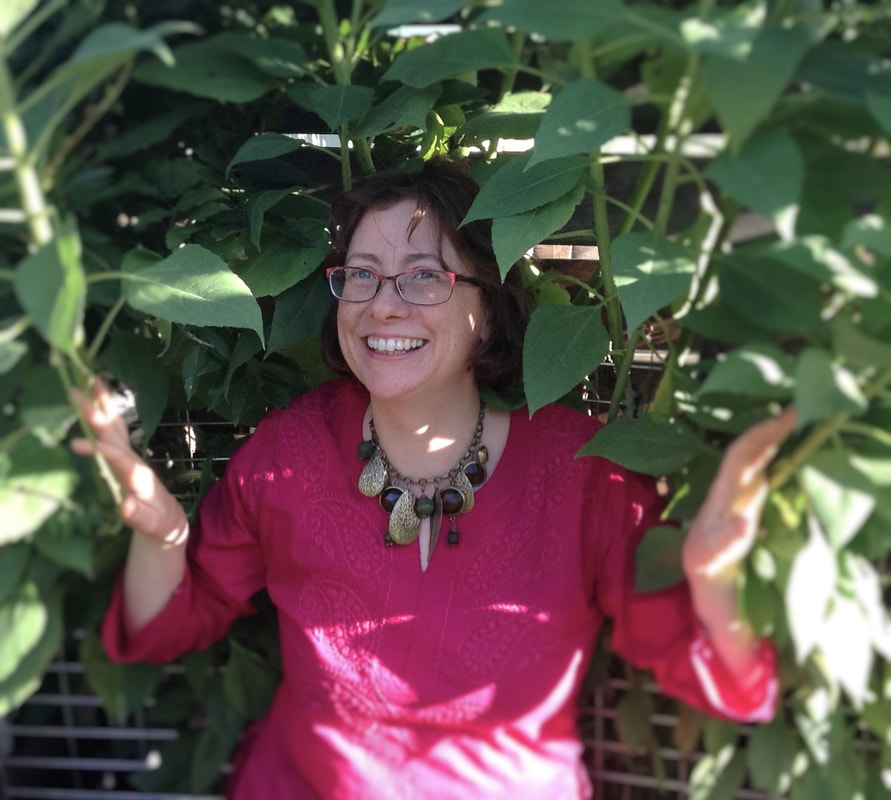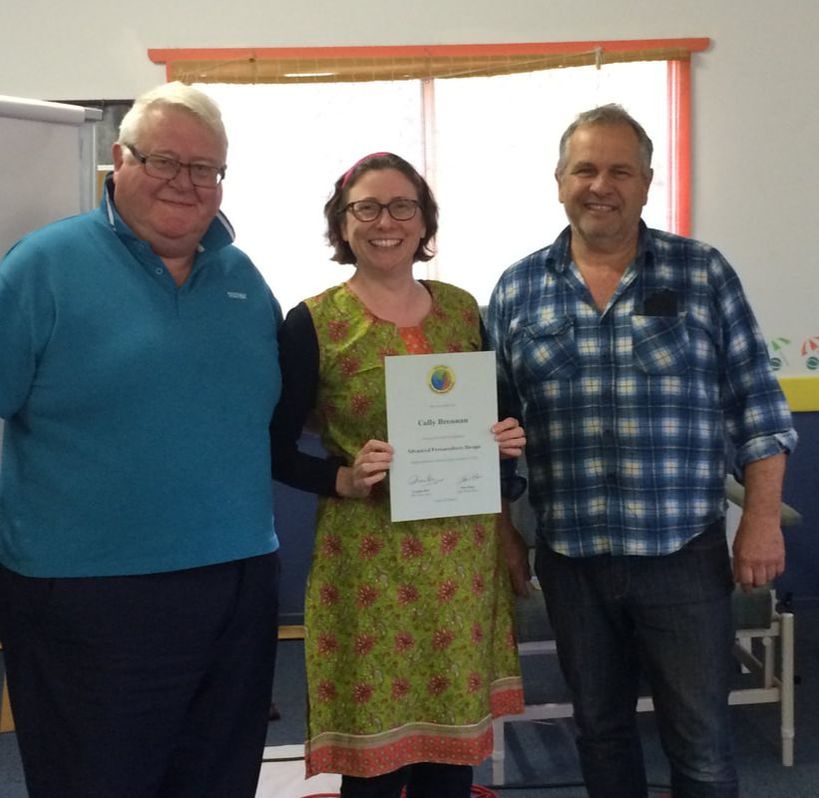About Dr Cally Brennan - permaculture designer and educator
|
I've always been a keen gardener, and have been practising permaculture for over 10 years. I have studied permaculture design with John Champagne, Graham Bell, Geoff Lawton, and Dr Ross Mars.
In 2013 I founded Canberra Permaculture Design and Education to service Canberra and the surrounding region. This small business provides garden advice and designs for both urban and nearby rural properties. From 2018 to 2020 I was also a Director of the Board of Permaculture Australia, Australia's national permaculture body, and Treasurer for the organisation in 2019-20. I have worked in many fields, including teaching and academia. Since moving to Canberra in 2006, I worked in a range of energy and climate-change related roles in the public service until 2018. I have a BA from the University of Western Australia and a PhD from Melbourne University. I live in Cook with my partner and our 9-year-old daughter, together with two dogs and a rather greedy resident possum. I have presented at the Canberra Environment Centre, Urban Agriculture Australia's City of Food Series and at Floriade (2013 and 2014). |
Useful information
Canberra Permaculture Design is a small business, located in Canberra, ACT, Australia.
Permaculture design is related to, but distinct from both landscape design and landscape architecture.
Landscape architecture is concerned with the way landscape, plants and buildings can interact to form a good design that is aesthetically pleasing and functional. Landscape design is usually more focused on the plants side of the equation and designers often have qualifications in horticulture as well as design. Both disciplines tend to emphasise aesthetic values over other considerations, although this is not always the case.
Permaculture design takes an ecosystems approach to landscape design, with the aim of creating sustainable and productive relationships between plants and hard landscaping (including building structures) so that over time, nutrients are naturally added into the system. Permaculture tends to emphasise productivity and yield over aesthetics for its own sake, although permaculture gardens can also be beautiful.
Because of the emphasis on sustainability and synergies between elements in the garden, permaculture gardens may need a bit of work and commitment during the establishment phase. Once established, maintenance requirements are moderate, and often lower than in more conventionally designed gardens.
Permaculture design is related to, but distinct from both landscape design and landscape architecture.
Landscape architecture is concerned with the way landscape, plants and buildings can interact to form a good design that is aesthetically pleasing and functional. Landscape design is usually more focused on the plants side of the equation and designers often have qualifications in horticulture as well as design. Both disciplines tend to emphasise aesthetic values over other considerations, although this is not always the case.
Permaculture design takes an ecosystems approach to landscape design, with the aim of creating sustainable and productive relationships between plants and hard landscaping (including building structures) so that over time, nutrients are naturally added into the system. Permaculture tends to emphasise productivity and yield over aesthetics for its own sake, although permaculture gardens can also be beautiful.
Because of the emphasis on sustainability and synergies between elements in the garden, permaculture gardens may need a bit of work and commitment during the establishment phase. Once established, maintenance requirements are moderate, and often lower than in more conventionally designed gardens.



